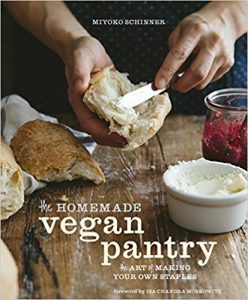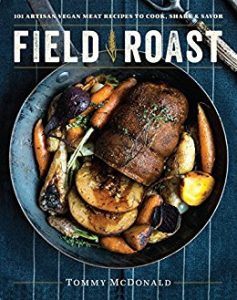 Easter is coming, and while I have no small children at home, my husband and I still celebrate the advent of spring on that day. I will make a special holiday dinner and invite our friends, all of us retired. This year the menu will include a coconut cream pie, which I can hardly wait to try out. I found the recipe on the Minimalist Baker website, and have included the link to it here: Vegan Coconut Cream Pie.
Easter is coming, and while I have no small children at home, my husband and I still celebrate the advent of spring on that day. I will make a special holiday dinner and invite our friends, all of us retired. This year the menu will include a coconut cream pie, which I can hardly wait to try out. I found the recipe on the Minimalist Baker website, and have included the link to it here: Vegan Coconut Cream Pie.
When I first began eating a plant-based diet, I started slowly, with truly meatless Fridays. My first forays into vegan cooking were not good. I had no idea what ingredients to buy and no idea how to make the food taste good. I had the mistaken notion that vegetables were bland.
Nothing could be further from the truth.
I realized that I needed to learn how to cook all over again. The first thing I did was to go to the internet. There I found the wonderful website, The Minimalist Baker. There I found an endless source of amazing, plant-based recipes, all requiring 10 ingredients or less. Even better, they could be made with one bowl, and usually took thirty minutes or less to prepare.
I believe that food should be clean, that is, raised without chemical sprays and fertilizers. To that end, I only buy non-GMO (genetically modified organism) food. Why am I so strict about this? Soybeans and wheat and other grains that are commercially farmed in large factory farms are genetically modified so the fields sown with those seeds can be sprayed with ‘Roundup,’ which is a chemical herbicide manufactured by the Monsanto company. Monsanto also manufactures the seeds that can withstand their chemical.
At first glance, this seems like no big deal. But Roundup is glyphosate, a broad-spectrum systemic herbicide, and crop desiccant. It is used to kill weeds, especially annual broadleaf weeds and grasses that compete with crops. Glyphosate is absorbed through foliage, and minimally, through roots and transported to the growing points within the plant. In March 2015, the World Health Organization’s International Agency for Research on Cancer classified glyphosate as “probably carcinogenic to humans.”
This chemical is used in many aspects of large factory farming, including desiccating grains for harvest.
The principal of eating organically grown foods is the same as not eating too much fish because of high levels of mercury—the small quantities ingested in each individual plant may not be harmful but the accumulation over time is bad. Because glyphosate is so pervasive in the standard foods available at the grocery store, I am strict about only buying organically grown produce, sugars, beans, and grains, as they are ‘clean,’ that is, grown and harvested without the use of pesticides and herbicides.
Organic food is more expensive than chemically raised food but eating a plant-based diet is far cheaper overall. And, the costs of organic foods are going down as small farmers increasingly embrace the craft. In the Pacific Northwest, where I am from, the small family farm is making a comeback, driven by the demand for clean food. The pressure against the small farmer from “Big Ag,” as the factory farming corporations are known collectively, is great.
But despite the lack of tax incentives and federal subsidies that the largest corporations receive, small organic farms are not only taking root, they are also thriving. A great article on the rise of “Food Forests” can be found here: These Oregon organic farmers figured out how to have nature do all the work.
 My new favorite cookbook is “Field Roast: 101 Artisan Vegan Meat Recipes to Cook, Share, and Savor” by Seattle chef, Tommy McDonald. This book now resides on my kitchen counter alongside the cornerstone of my personal cuisine, “The Homemade Vegan Pantry: The Art of Making Your Own Staples” by Miyoko Schinner.
My new favorite cookbook is “Field Roast: 101 Artisan Vegan Meat Recipes to Cook, Share, and Savor” by Seattle chef, Tommy McDonald. This book now resides on my kitchen counter alongside the cornerstone of my personal cuisine, “The Homemade Vegan Pantry: The Art of Making Your Own Staples” by Miyoko Schinner.
With just these two books and my favorite vegan websites, I have developed a style of cooking that makes each meal a small celebration of the food we are so fortunate to enjoy.
Whether you are vegan, a carnivore, or somewhere in between, food is more than just something we eat to stay alive—food and how we prepare it is a central facet of our lives. I’m so fortunate to live in the Pacific Northwest, where the food culture is leading the way to a healthier lifestyle, and where small farmers are able to do what they do best: grow amazing food for me to prepare for my family.
